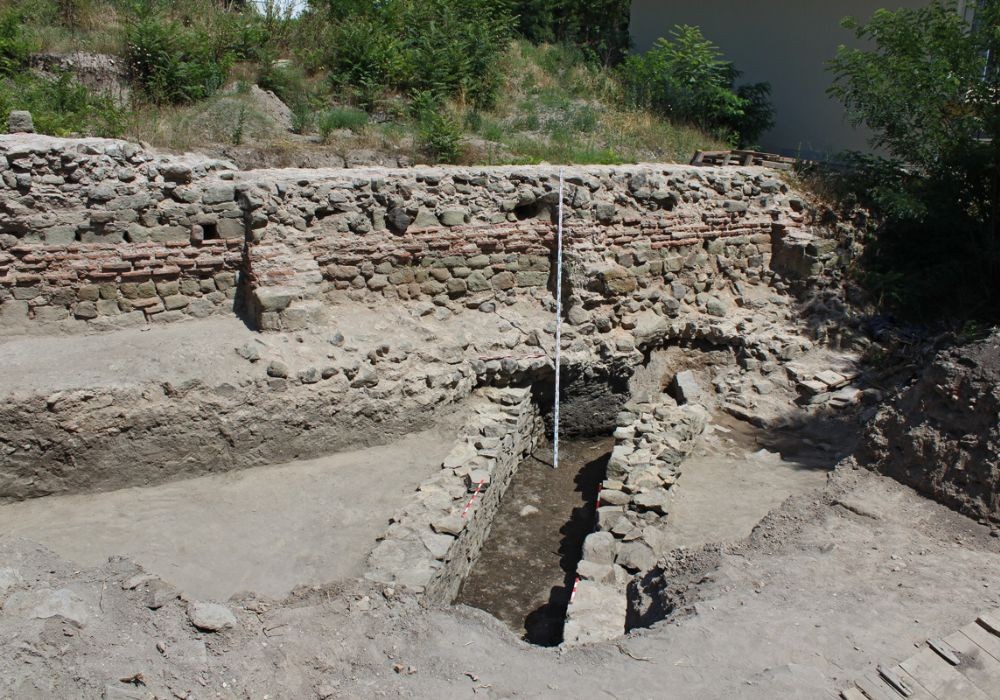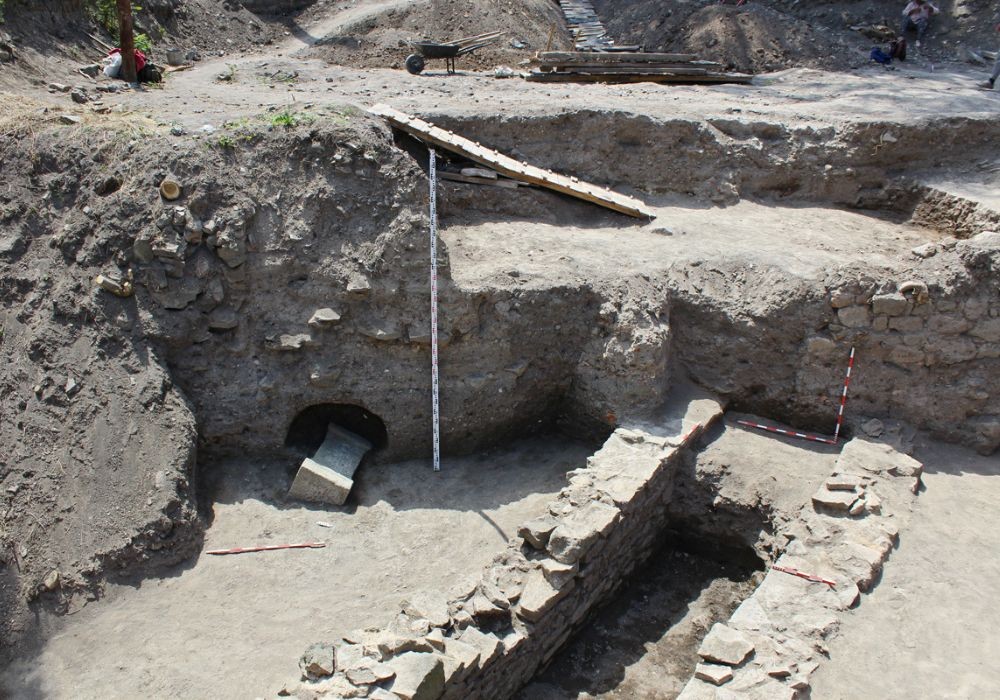Part of an ancient 1st century Roman canal was unearthed during excavations of a Roman bath on the territory of an ancient settlement called Aquae Calidae this archaeological season. Structures from medieval rooms, built using mortar and mud as binding material were also unearthed, as well as part of a Medieval wall, the Regional Museum of History in Burgas has announced.

The digs near Burgas also unearthed old coins, mostly from the 4th century, 11th century Medieval seals, as well as large amounts of 12th – 13th century earthenware. A few days ago archaeologists made a unique find – an altar, found intact, with an intriguing inscription in Latin dating to the 2nd century AD. This inscription tells us that it was made as a token of gratitude to the nymphs (protectresses of the springs and givers of health), with a dedication by a Roman officer from Parma in Italy sent to serve in the Balkans.

The warm spring at what are now the Burgas mineral baths has been known for centuries. People from near and far would flock here to pray for health and to seek a cure for their ailments. According to historical records, Aquae Calidae came into being, as far back as the first millennium BC, around the mineral springs near what is today the city of Burgas. That was when the Thracians built a beautiful sanctuary – the sanctuary of the three nymphs – close to the hot spring. The thermae complex covered an area of over half a hectare. And because there was a constant stream of people coming here for the medicinal waters, a whole town sprang up around the baths. The Romans called it Aquae Calidae – hot waters - and in 61 AD Emperor Nero built magnificent baths, later fortress walls were erected. During the Middle Ages Aquae Calidae came to be known as Therma or Thermopolis (from Greek – warm city). In the 14th century, Sultan Suleiman the Magnificent also appreciated the curative properties of the water and built a modern, for its time, Turkish bath.
In our day tourists can see the fully restored marble-clad bath belonging to Suleiman the Magnificent, with its ceramics, typical of the Orient.

Compiled by Veneta Nikolova
Photos: aquae-calidae.com, burgas.bgPipes from the end of the 17 th , the 18 th and the 19 th century and the tradition of growing tobacco in Bulgaria are presented in the newest exposition at the Museum of Archaeology in Burgas. “Pipes like this are to be found often on the..
In Bulgaria, when we talk about a person with bad luck, we often say: "Ah, what a Marko Totev!" But who exactly was Marko Totev, and how did his name become a byword for a person with ill fortune and a bad luck? "He was a Bulgarian public figure..
30 March marks the end of the most blessed time of the year, as Muslims call the month of Ramadan. This year it started on 1 March, and the most important obligation Muslims have during this 30-day period is to refrain from food, drink and temptation..
Pipes from the end of the 17 th , the 18 th and the 19 th century and the tradition of growing tobacco in Bulgaria are presented in the newest..

+359 2 9336 661
